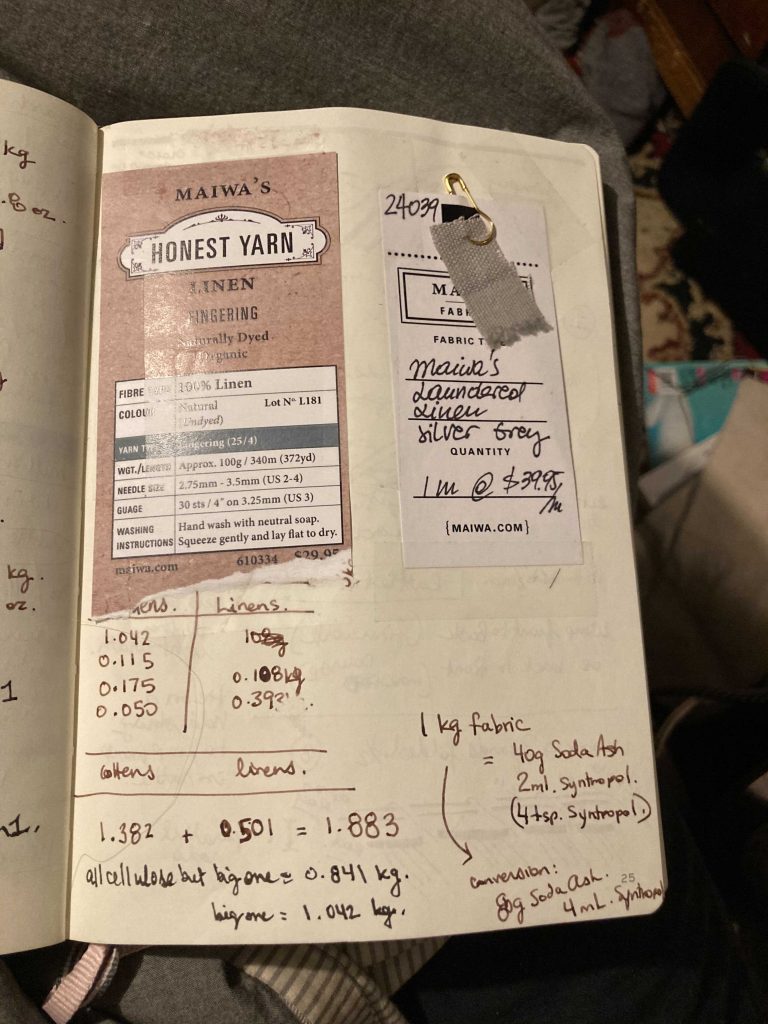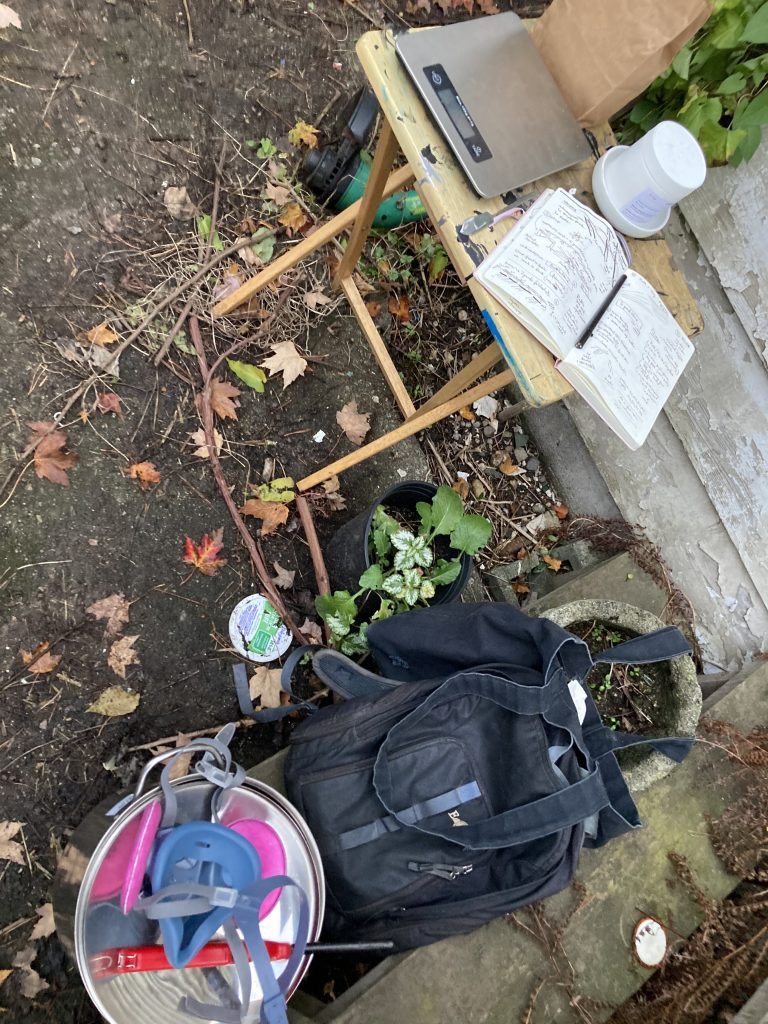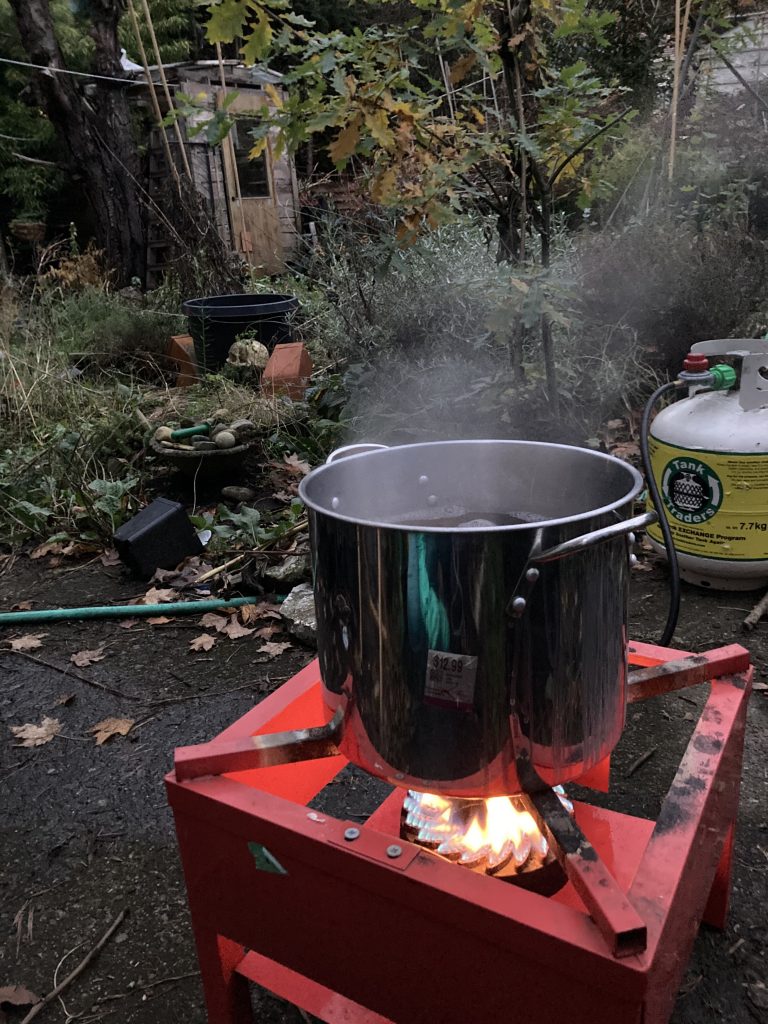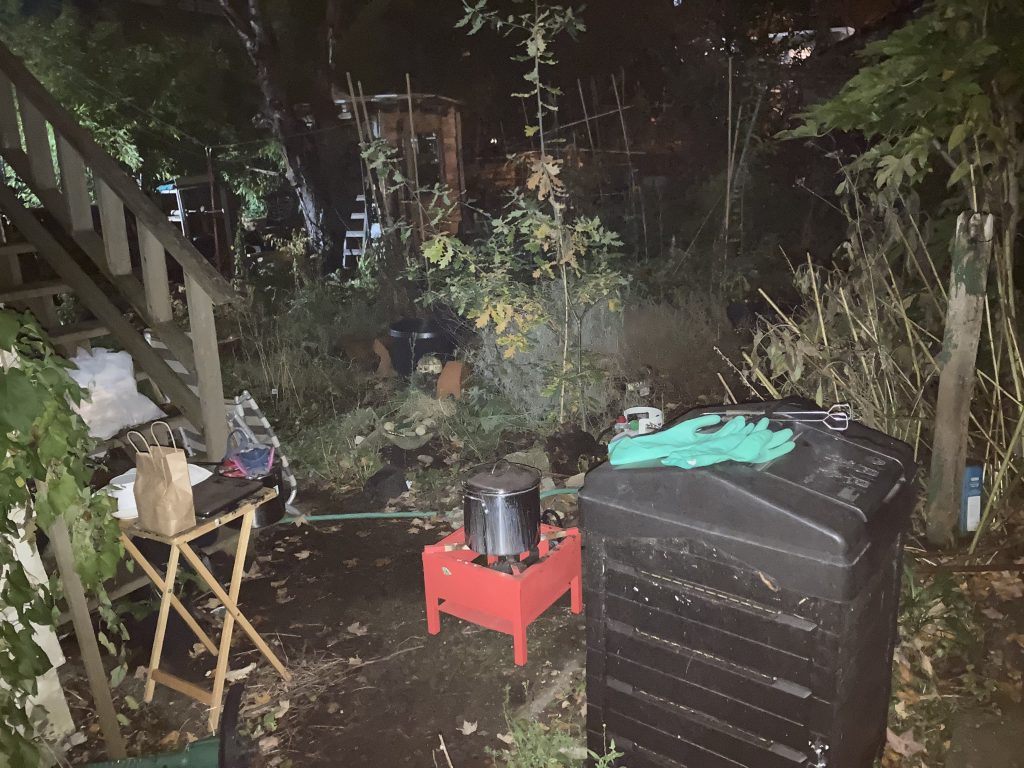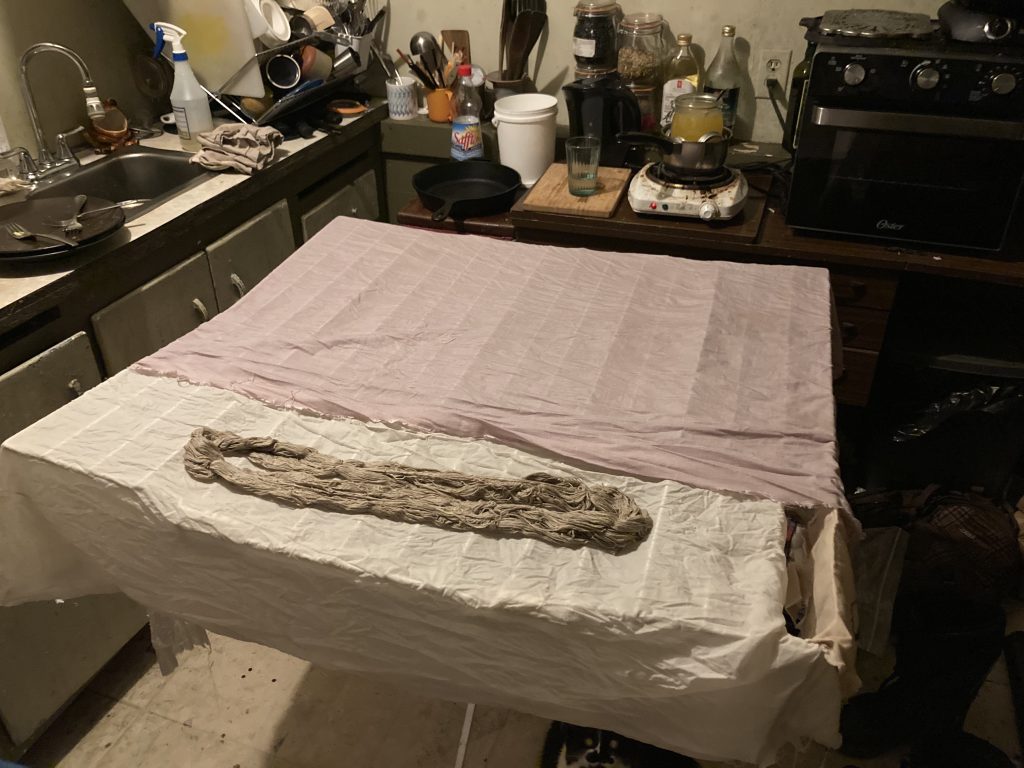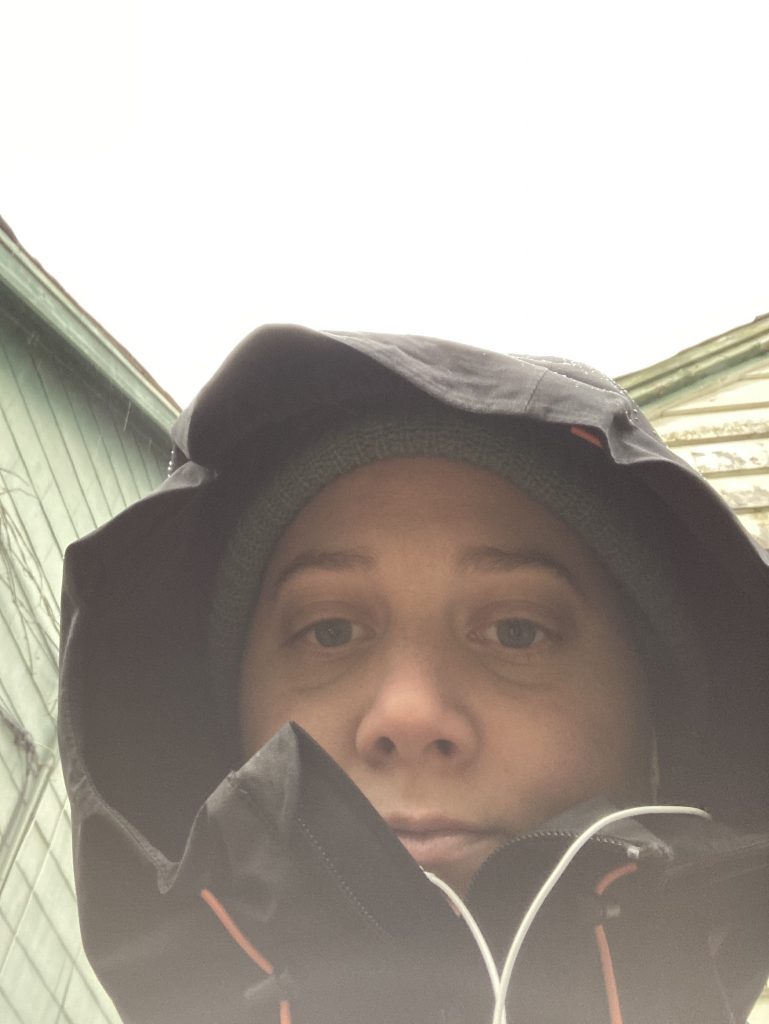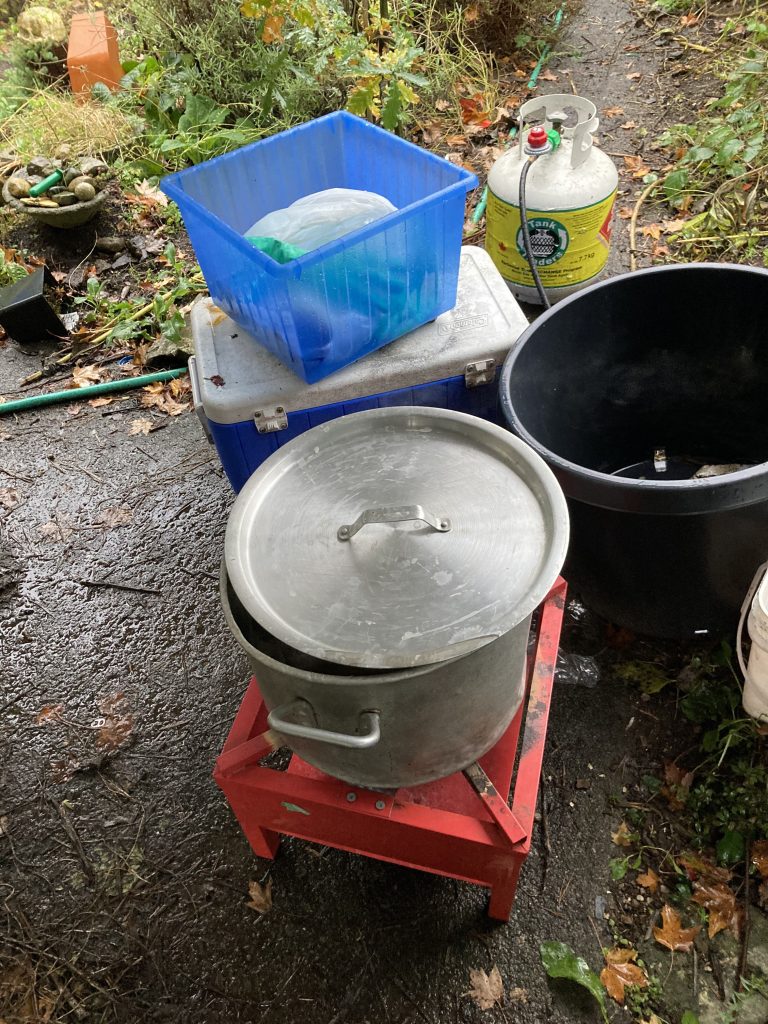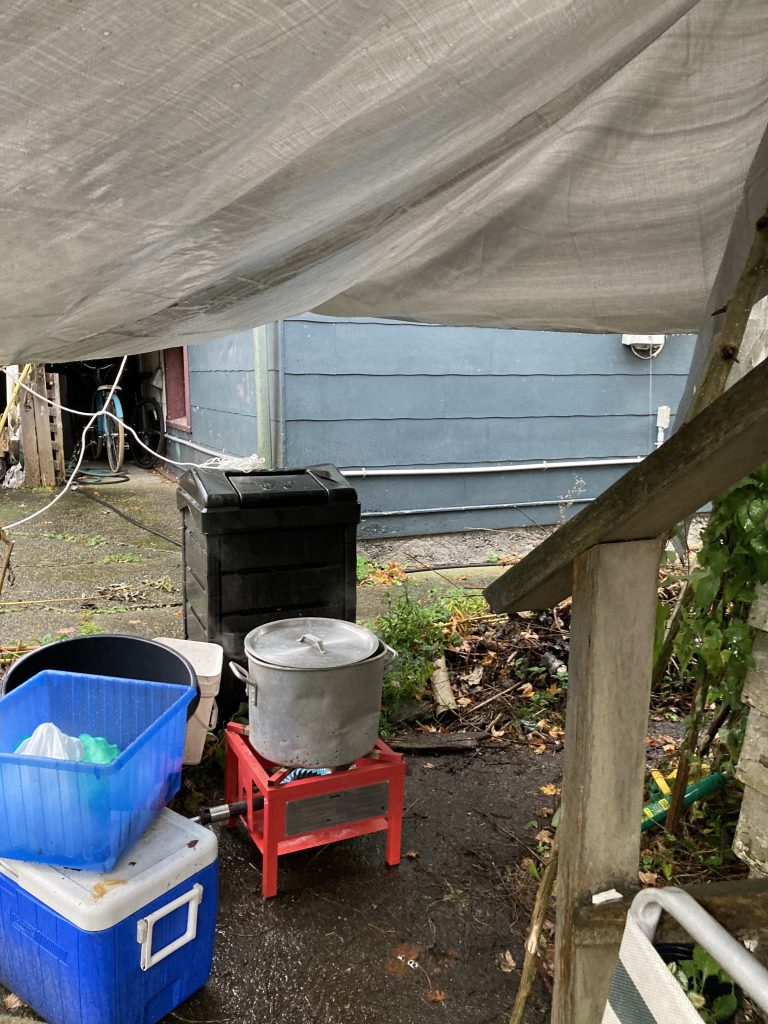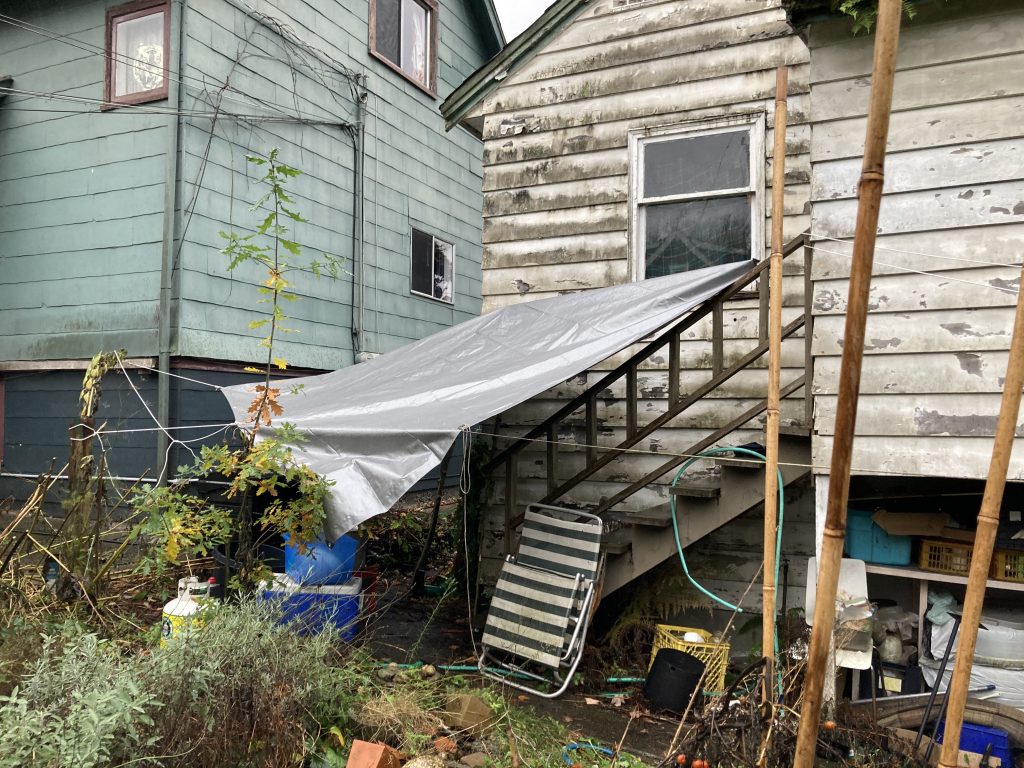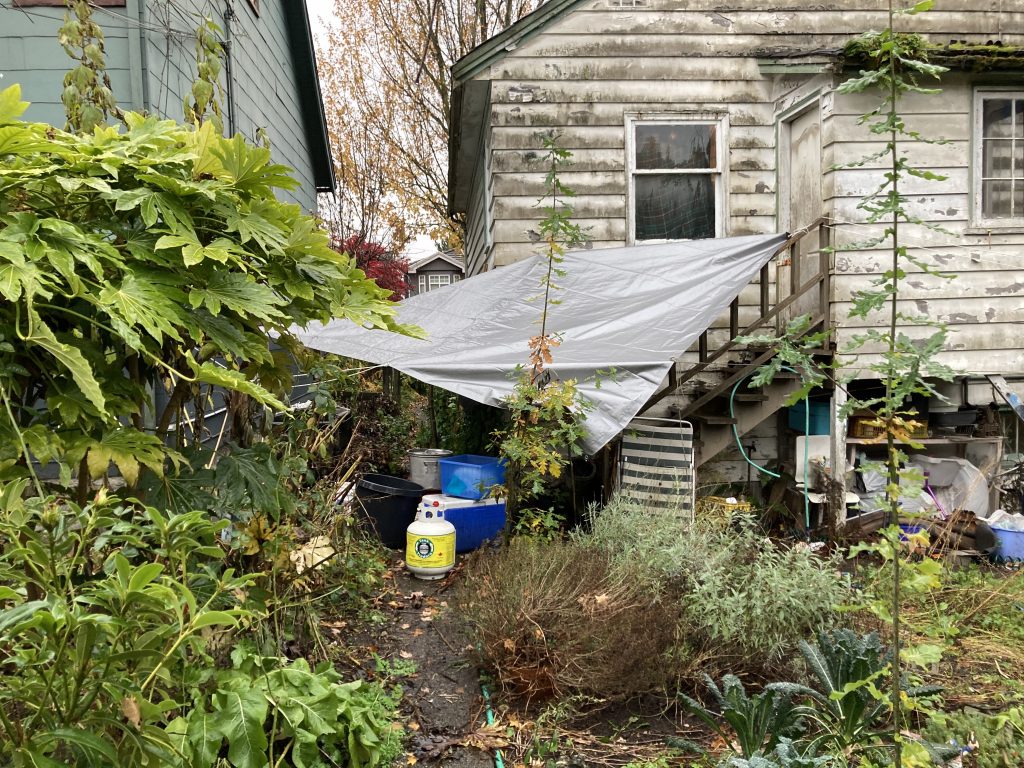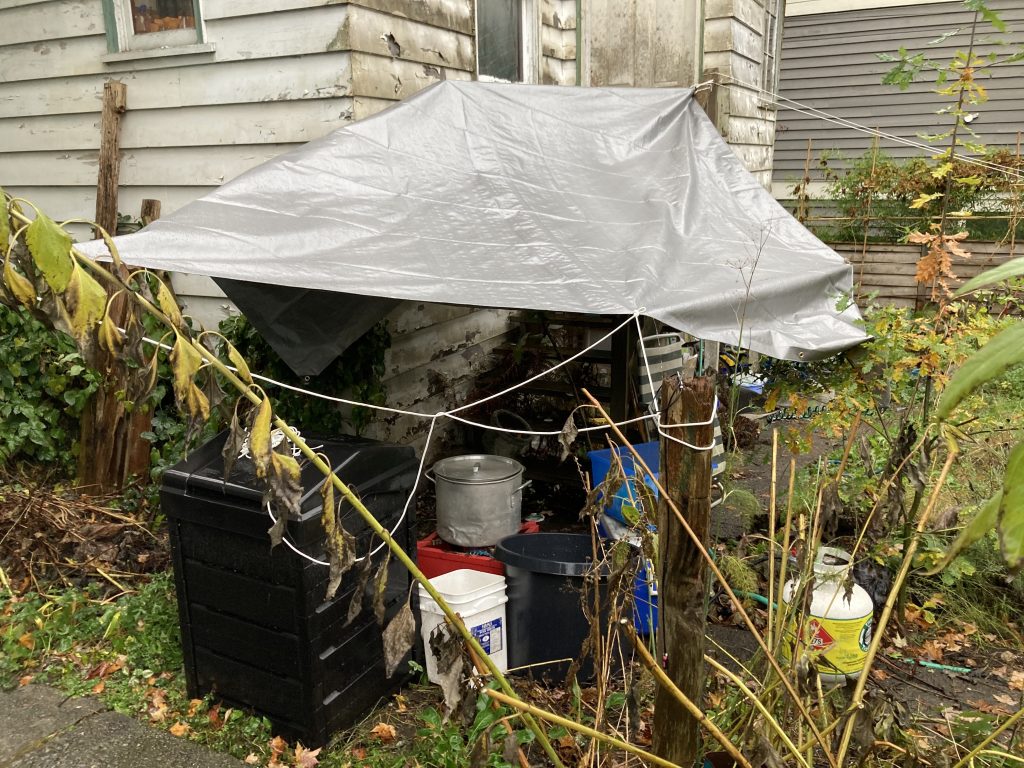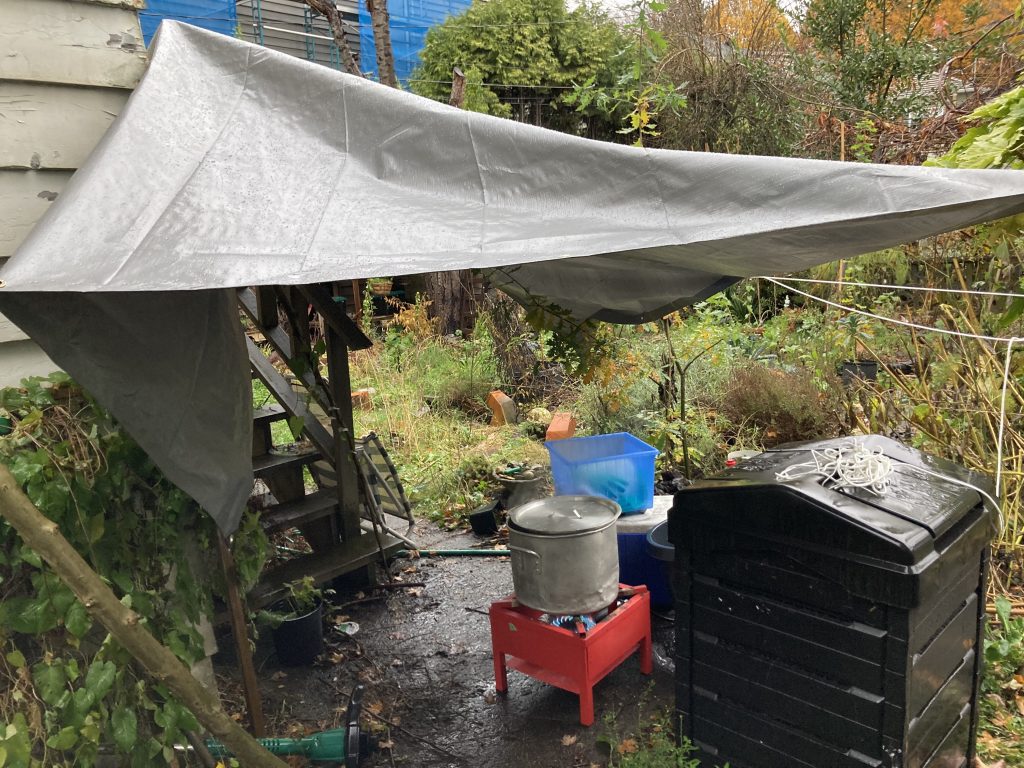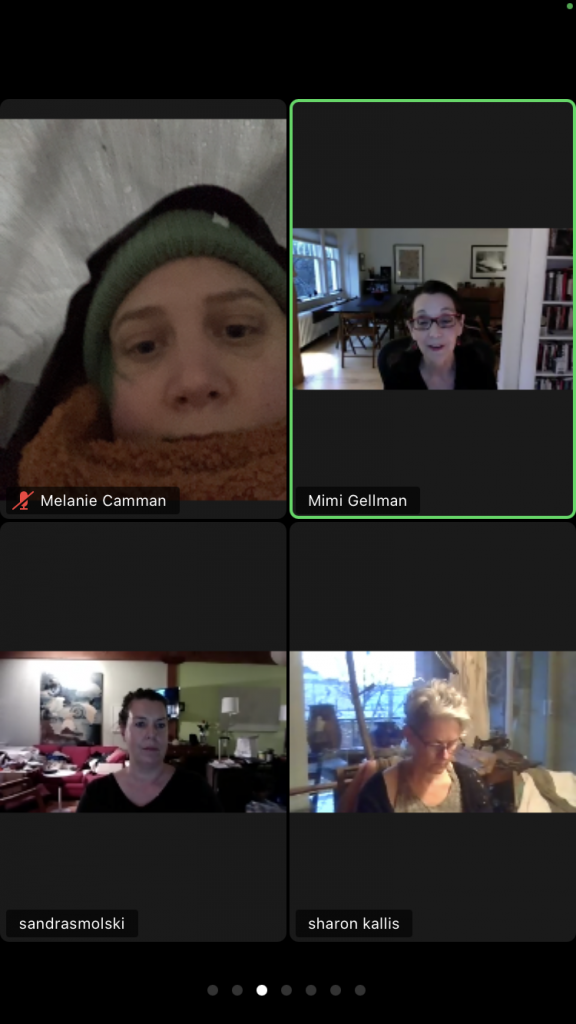Backyard Bolonaise
So, I had ambitions of doing a whole bunch of dye work this week. Last week I had spent time out in the neighbourhood gathering and harvesting. I have a giant pile of acorns now. But realized that there is a bit more that goes into dying than just the colour. This week I learned about the invisible work that goes into dying the fabric, the scouring and mordanting. But before that work begins, time for dinner.
Calculations
So I gathered up all the samples of fibres I had around the house, as well as the linen that I purchased. It might be a while before I have the skill to turn flax into the fabric, so for now, I will have to purchase the linen I want to work with. I weigh all the fabrics and calculate the amount of detergent and soda ash I should use. This is where I get the most confused. Every source I look at says something different. Some say absolutely not to use regular washing soda, others say they do. I find myself in a holding pattern for a few days, I decide to not use the washing soda and instead order in the soda ash. For some reason, I am finding it hard to act. I have no idea what I am doing and wish I had someone with more experience to turn to. I seem to have this tendency, this desire to learn from someone. I have to push back against that tendency, and just dive in. There is no risk here, any mistakes will be a part of the learning. I remember my Aunt Norma telling me to keep detailed notes about my textile projects so I have something to reference. I figure if I am going to be making a bunch of mistakes, it’ll be good to have a recording so that I have a starting place of what not to do the next time. I am listening to Robin Wall Kimmerers audiobook, where she narrates Braiding Sweetgrass. She talks about her role as a teacher, and as a student. She talks about her students becoming her teachers, and about the plants as teachers. She describes in one chapter on basket weaver how an elder teaches the young children. He makes a horse for them as an example, places it before them without instruction then leaves them to figure out how to make a horse for themselves. I realized at that moment, that I have enough information to move forward with, even if I don’t have all the answers. This helps me mobilize again. Unfortunately the weather has shifted, I missed the window for working outside on a sunny afternoon. Everything takes longer than I expect, and I spend the next few days working in the dark, and setting up tarps to weather the rainstorm.
Batch 1 – in the dark
So I probably wasn’t as efficient as I could have been. I washed the fabrics in detergent at my sibling’s house (Bill and I don’t have a washer or dryer). But the soda ash didn’t arrive until the next day. Carolyn had a bunch of work meetings, and their place would be unavailable until the weekend, so I decide to use the gas burner that we use for beermaking and canning in my backyard. Unfortunately, my pot was too small, so I could only do half the material at a time. The soda ash is amazing it pulls so much out of the cloth, everything comes out a different colour, a colour that looks like it wants to be dyed. And the smell was lovely. The boiling cotton and linen had a warm earthy smell. But it took a long time to get the water to a boil and keep it at a boil for a full hour. By the time I got it rolling the sun had set, and I had to finish in the dark. Still, I was thankful for the excuse to be outside and away from my computer!
I woke up and the first batch was dry, it was crustier now, not brittle, but had this crunchiness to it. Especially the linen yarn. Maybe I didn’t rinse it enough, but linen gets softer with time, so I’ll just wait and see what happens after mordanting, and the dye bath.
Batch 2 – covered up
So with all the delays I missed the good weather, it was cold with a heavy rain. I started earlier this time, so I wouldn’t have to finish in the dark, but the wind was strong and the rain was making the pot take longer to get to a boil. So I grabbed a bunch of containers from around the yard to create a wind break, and pulled a tarp out from our camping stuff, stringing it up from the corner of the two houses. Somehow this made it so much more fun, it reminded me of building blanket forts with my cousins at Granny’s house.
I knew what to expect this time, and felt far more at ease than I had earlier in the week. Again the smell of the boiling fabric was wonderful. I also had Robin Wall Kimmerer’s narration to keep me company. As well as Mimi Gellman’s Braiding Sweetgrass bookclub.
Invisible work takes time
So, this prep was supposed to be done in a day, so I could move on to mordanting and dying all within a week. Why does everything take longer than I expect it to? I was disappointed that I didn’t get to the fun part, the colour. But on reflection, I decided it was good to curb my expectations, to allow the process to take the time it takes, and to adjust my plans as things unfold. I forget that inexperience is a factor that slows everything down, but also slowing down makes the experience more enjoyable. I had fun this week. I felt good about what I achieved. Listening to Braiding Sweetgrass while outside doing the work felt more meaningful than it had in previous weeks. I had done the invisible work, the unexciting part, and when it is time I will be ready to add colour to the cloth. Well, actually I still have to figure out the mordanting process. I wonder what else would be categorized as invisible work, and when I encounter this kind of work, will I remember the lessons I learned this week?
Final note
The loom arrived this week. My mom sent me her Dorset floor loom for my birthday this year! I am so excited. I think I may have to take a break from the dye project while I get the loom set up!



